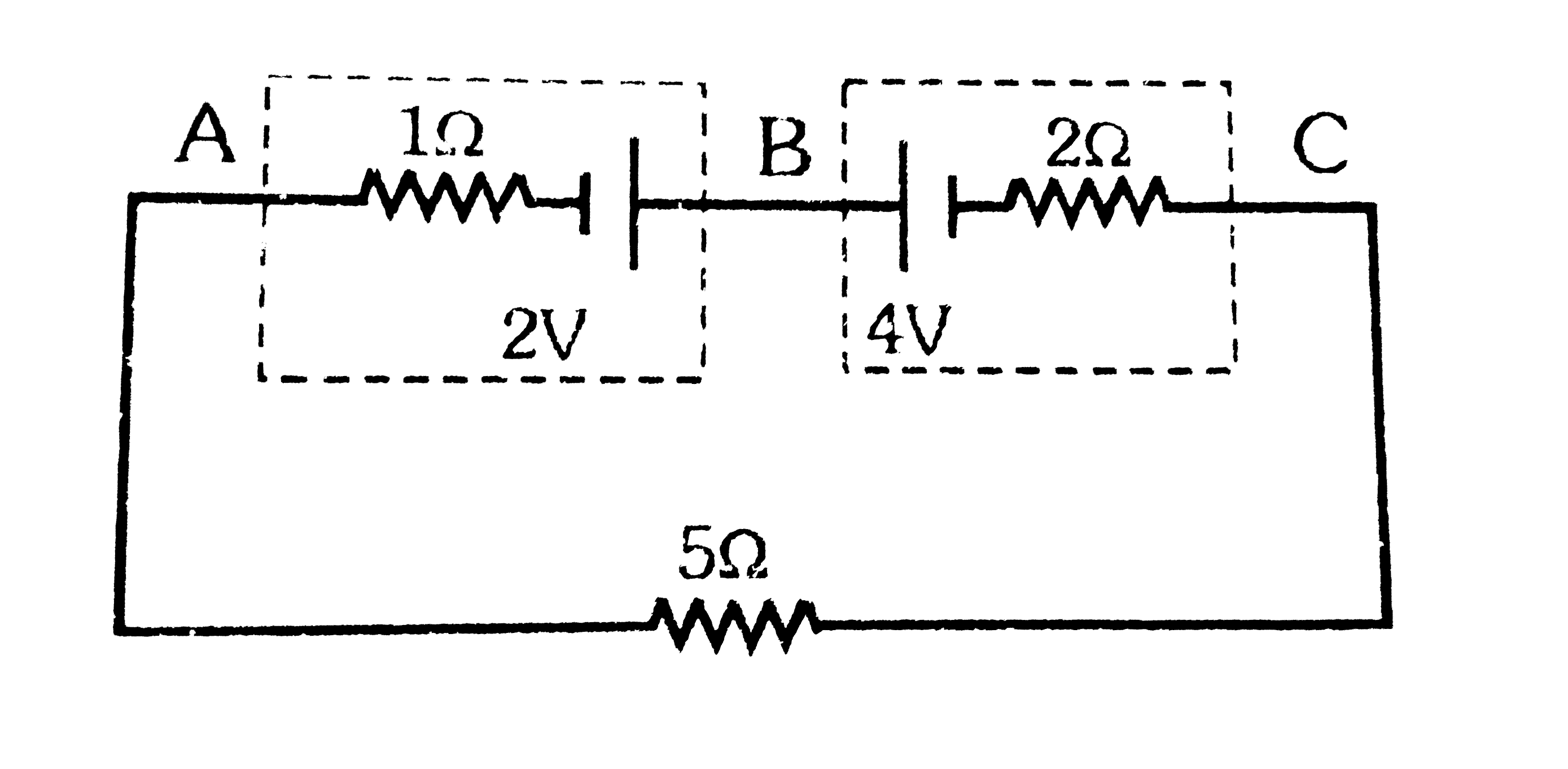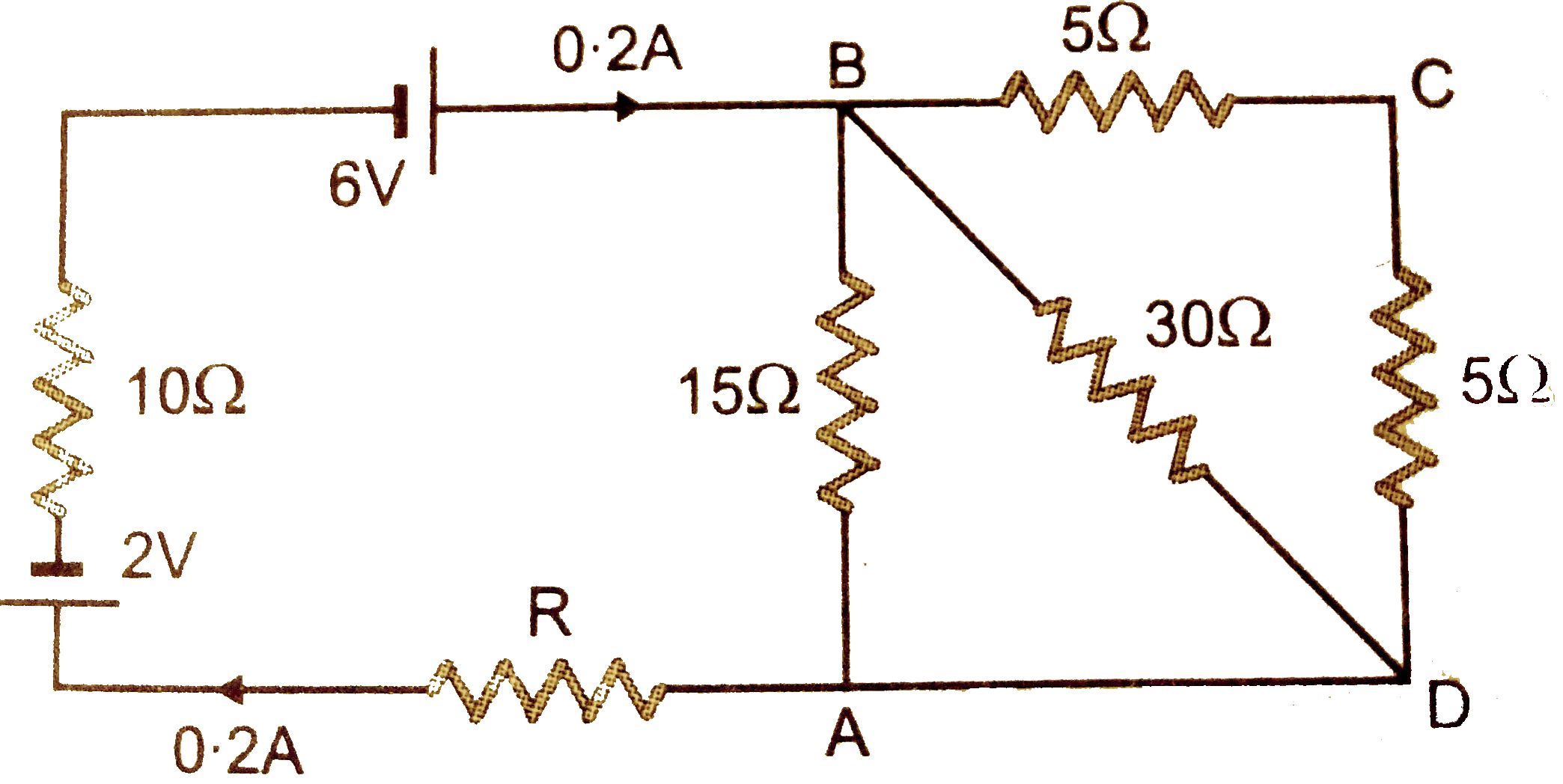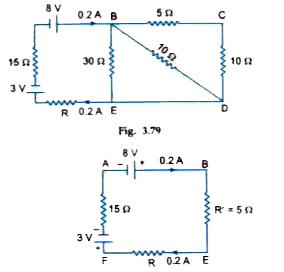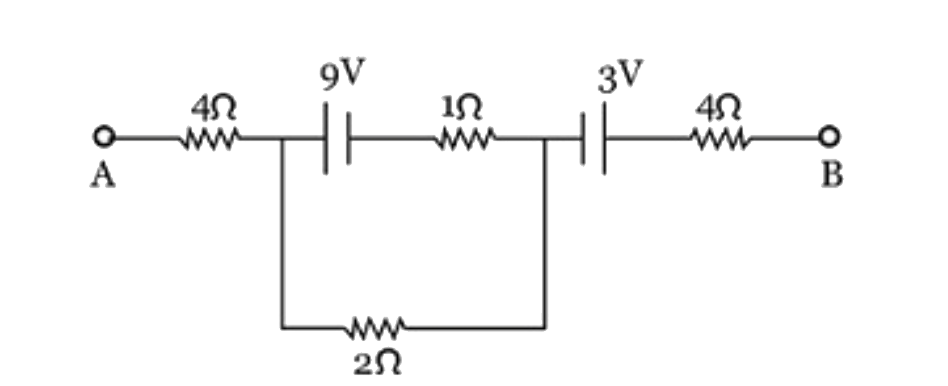In figure circuit section AB absorbs energy at the rate of 5.0W when a currenti=1.0A passes through it in the indicated direction.
(a) What is the potential difference between points A and B?
(b) Emf device X does not have internal resistance. What is its emf?
(c) What is its polarity (the orientation of its positive and negative terminals)?

10V
50V
20V
30V
The correct Answer is:B
As section AB consumes 50Wat1AandP=VI. S0
V=VA−VB=PI=501WA=50V
As RandC are in series,
V=VR+VCorVC=V−VR
But here V=50VandVR=IR=1×2=2V. So VC=50−2=48V.
Now as the element C absorbs energy and has no resistance , it is a source of emf with zero internal resistance ( i.e., ideal battery ). So emf
is E=V+Ir=48+1×0=48V.
As in charging , positive and negative terminals of the charger are connected to the positive and negative terminals of the battery, respectively ,B is connected to the negative terminal of element C.
Topper's Solved these Questions
- HEATING EFFECT OF CURRENTBOOK - CENGAGE PHYSICSCHAPTER - HEATING EFFECT OF CURRENTEXERCISE - Integer
5 Videos
- HEATING EFFECT OF CURRENTBOOK - CENGAGE PHYSICSCHAPTER - HEATING EFFECT OF CURRENTEXERCISE - Calculating Thermal Power in Resistance
14 Videos
- HEATING EFFECT OF CURRENTBOOK - CENGAGE PHYSICSCHAPTER - HEATING EFFECT OF CURRENTEXERCISE - Assertion - Reasoning
6 Videos
- GRAVITATIONBOOK - CENGAGE PHYSICSCHAPTER - GRAVITATIONEXERCISE - Question Bank
39 Videos
- INDUCTANCEBOOK - CENGAGE PHYSICSCHAPTER - INDUCTANCEEXERCISE - Concept Based
9 Videos
Similar Questions
In Fig 27-52, circuit section AB absorbs energy at a rate of 50W when current i=2.0A through it is in the indicated direction. Resistance R=2.0Ω, (a) What is the potential difference between A and B? Emf device X lacks internal resistance. (b) What is its emf? (c) is pont B connected the positive terminal of X or to the negative terminat?

View SolutionCalculate the value of current and indicate its direction Also calculate the potential difference between the points (i) B&A (ii) A&C

View Solution
Knowledge Check
In the circuit shown in figure potential difference between point A and B is 16V. Find the current passing through 2Ω resistance.
 A1.5AB3.5AC1.0AD2.5A
A1.5AB3.5AC1.0AD2.5AIn the circuit of figure, the current in 4Ω resistance is 1.2A , what is the potential difference between B and C?
 A3.6VB6.3VC1.8VD2.4V
A3.6VB6.3VC1.8VD2.4VWhat is the power rating (in W) of a bulb if a current of 0.1A passes through on application of 250V of potential difference across its terminals?
A2500B50C25D1250
Calculate the value of the resistance R in the circuit in the so that the current in the circuit is 0.2A. What would be the potential difference between points AandB ?

View SolutionA current of I=10 A is passed through the part of a circuit shown in the figure . What will be the potential difference between A and B when I is decreased at constant rate of 102 amp/s at the beginning ?

View SolutionCalculate the value of the resistance R in the circuit shown in Fig. so that the current in the circuit is 0.2 A. What would be the potential difference between points B and E ?

View SolutionWhat is the power rating (in W) of a bulb if a current of 0.3 A passes through on application of 240 V of potential difference across its terminals?
View SolutionIn the part of the circuit shown in the figure, the potential difference between points VA−VB=16V. The current passing through the 2Ω resistance will be

View Solution
